Friends of Myles Standish State Forest
East Head Reservoir Eco Tour

Scrub Oak (Quercus ilicifolia)
The creation of a thousand forests is in one acorn.
- Ralph Waldo Emerson
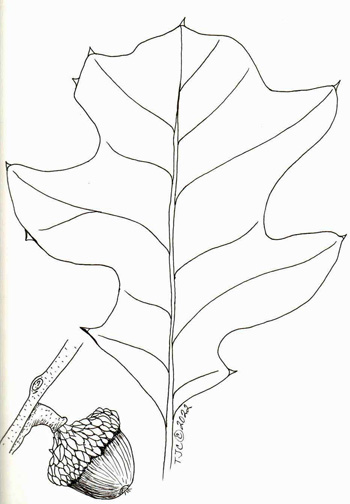
Scrub Oak Leaves and Acorn
Scrub Oak is a small gangly, deciduous tree, growing three or four feet tall in dense thickets. Scrub oaks thrive in full sun with little moisture. The branches are gnarly and seem to grow every which way, often investing a neighboring scrub oaks territory, making a mesh that will challenge the most proficient bushwhackers.
Scrub Oak’s Double Perjorative
Various definitions of scrub include “stunted growth”, “inferior breed or physique”, or simply “not among the best “. Certainly not among the terms one would want on a resume. But further, the scrub oak’s natural habitat is the Pine Barrens, the only habitat on Earth with a pejorative name. Pine Barrens emerge when an area is burned frequently (every five to ten years). That means the only plants that grow are adapted to fire. The scrub oak has a deep taproot that does not die and can resprout several times after successive fires. The Pitch Pine is also fire adapted and forms the signature tree duo of Pitch Pine Scrub Oak - the signature tree of the pine barrens.
Pine Barrens
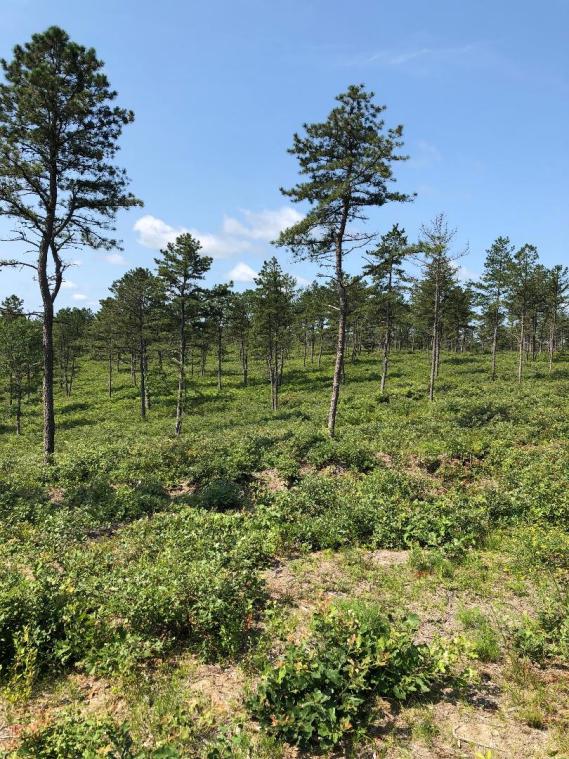
Pitch Pine -Scrub Oak - Charlie Pye
This habitat has 10 - 30 % canopy cover and is a “least dense forest”. But the forest around East Head doesn’t look like that. The reason is that no fires has burned around the lake for a long time. As you hike, note the deadwood on the ground, and the ages of the trees. These tall trees shade both pitch pines and scrub oaks and suppress them. Succession, Through time (200 years), barring fire, this will become a mature deciduous forest. Pitch pines and scrub oaks will be relegated to refugia on rocky outcrops, drafty spots, etc, and there they will remain until a fire kills the tall trees and allows the little guys to flourish again.
Forest Community: Hub of Life
Oak trees usually support more life forms than most other species. For example, twenty-nine percent of the rare and endangered species of butterflies and moths in the forest use scrub oak as a site for their larvae. Also scrub oaks provide protection from predators for the rare New England Cottontail. Acorns are the preferred winter food source for the white-tailed deer. Red and gray squirrels and chipmunks all cache these acorns for winter use.
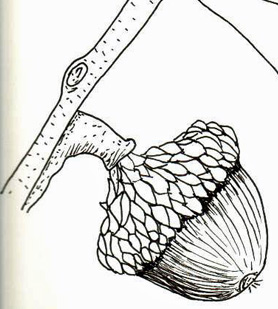
Scrub Oak Acorn
Can you find a perfect oak leaf, one without predator or parasite damage. In the image below the oak leaves have holes in the leaves, chewed edges, several growths, a rolled leaves (bottom) and white denuded patches. All of these are probably different organisms. Further, so many use the oak that the offending species may be hard to determine.
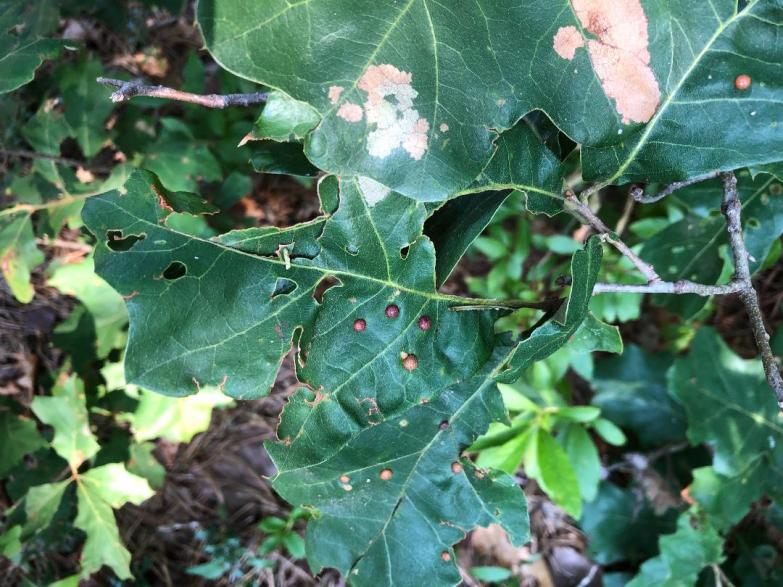
Perfectly Delicious - Charlie Pye
So many insects use the leaves for food, that unless the parasite is found, identification can be difficult.
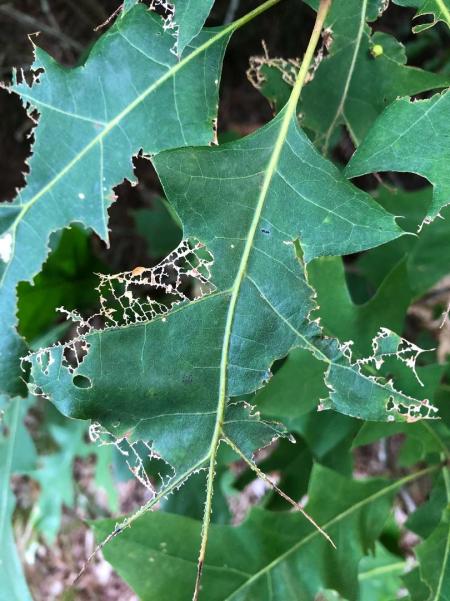
Leaf Miner, Gypsy Moth, Sawfly Larvae? - Charlie Pye
Don’t That Gall Ya?
Galls are abnormal growths caused by a variety of parasites including viruses, insects, mites, fungus, bacteria and even other plants, probably including the growths in the previous picture. These parasites usually attack actively growing leaves in the spring, and use all sorts of approaches to further the parasites lifestyle. Sometimes they fold or roll the leaves to make shelter, and they often eat the leaves, Many parasites use, irritants, hormones etc, to affect the growing DNA and force the tree to make a specific shelter as pictured below. Below are reviews of two of these.
Scrub Oak Gall
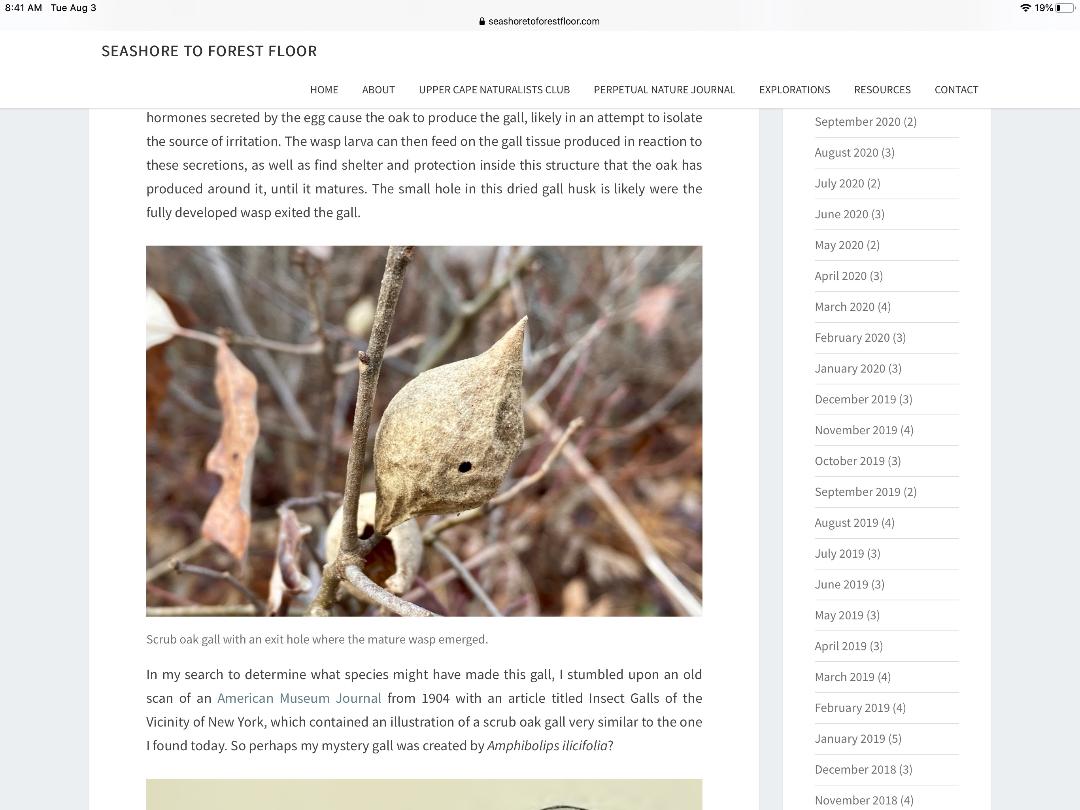
This is caused by a wasp that lays eggs on the scrub oak and secretes hormones that cause the oak to form a structure so distinctive that identification become easier.
Amphibolips ilicifolia
seashoretoforestfloor.com
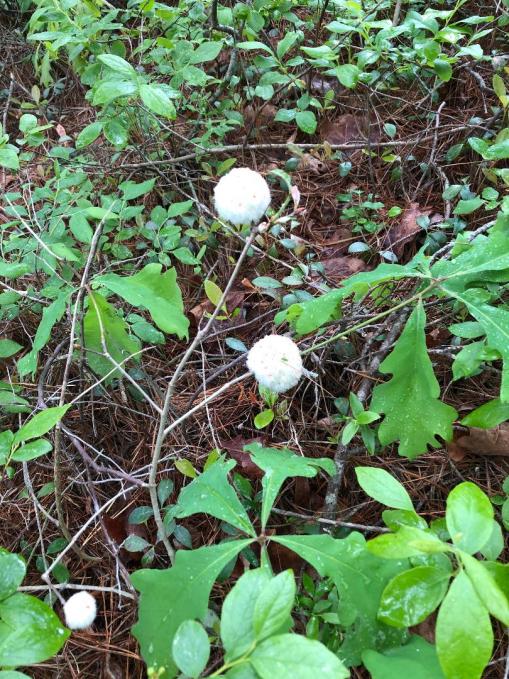
Cotton Ball Gall
A female gall wasp (probably Andricus quercusramuli) lays eggs on the male catkins of scrub oaks. In addition to laying eggs , she also injects irritating hormones. In response to the irritation, the oak builds a structure that looks like a cotton ball, but acts as food and lodging for up to 20 larval wasps.

Cotton Ball Gall - Charlie Pye East Head Trail
.All line drawings by: Patricia J. Cassidy